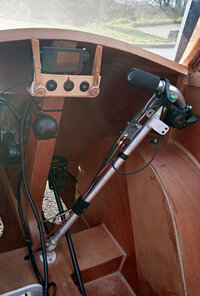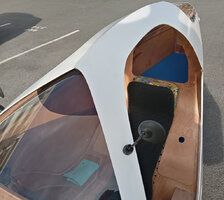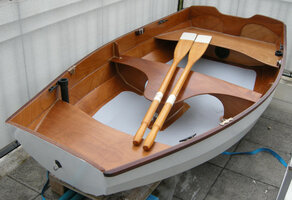Today I finished building my Agilo. That does not mean that over the coming weeks I will not be adding some improvements

what I mean to say is that it has been completed and is ready to drive whenever I want to, everything works as it should. Well maybe not the speed sensor but we shall see, it may have moved a little too far from the magnet.

The cockpit is tidier and functional:
- chain tube on the pulling side means I can change gears really easily, much more easily than with a glove, and drive in jeans without getting oil on them. Chain tubes held in place by a Ginkgo bracket which is much better than the one I had before
Note to builders: much easier to install before you glue the seat in...
- wires have been gathered in plastic spiral wraps
- the green button on the tiller lets me light the brake light, even when I am not braking... A security feature

The wiring is also ready to be plugged into a micro-switch activated by the brake lever.
- the horn bulb has found its place and is easy to reach and honk, it is held on by a spare metal U bracket from some Ikea furniture
- the screws that hold the dashboard on have an elegant protection in case of accident

- the clothes pegs hold the top of the windscreen folded open for ventilation, it is held closed by a Velcro
- the dashboard conceals the buttons to turn on the LCD but they are very easy to reach when you know where they are = security feature

This tiny 210 x 297 mm sample of UV film already brings huge benefits in this season of low to the horizon sun. The plan is before the summer to enlarge down to the level of the mirrors, along the top of the side windows and of course all of the rear window. A clean and tidy interior with lots of space just waiting for a driver

The luggage compartment next to the door hold tools, groundsheet, a bit of foam to kneel on and other tech stuff. On the other side clothes, a micro fibre towel for the engine, etc. Personal stuff.
To-do:
- make a wooden electrics box, the plastic one is already broken
- mount the headlight better
- paint
- mount the new wheels and tyres...
- take more photos





